Wondering how to care for baby bunnies? Well, that is what this page is about. While we probably wouldn’t recommend that you just dive right in and look after a newborn bunny baby without owning a different rabbit in the past, we are sure that the information on this page will help you out.
It is worth noting that a lot of the tips on this page will also apply to a wild baby rabbit. So, if you find a bunny baby in the wild that doesn’t seem to have a mother in sight (you should always check!), the tips on this page are going to help you out too.
Although, of course, you should never touch wild bunny babies unless you absolutely must.
It is also worth noting that looking after bunny babies isn’t as difficult as you may think. Obviously, it is going to require some knowledge about rabbits on your part, but in the wild, rabbits can be fairly self-sufficient.
Not as self-sufficient as hares, but enough that after a few weeks, they should be running about on their own.
We are going to try and break this article down into the order that you will be dealing with the bunny babies. However, we do encourage you to read through every single word here. Do not just look for a single section and get your information from that. You need to read it all.
Contents
- 1 What to Know About Newborn Bunny Baby
- 2 How to Take Care of a Newborn Rabbit
- 3 Preparing the Mother
- 4 Preparing for the Baby Bunny
- 5 Wait for the Birth of the Bunny Babies
- 6 What to Feed a Newborn Rabbit
- 7 How to Hand Feed a Baby Bunny
- 8 How to Handle a Baby Rabbit
- 9 Don’t be Afraid to Handle the Baby Bunnies
- 10 Remove the Male Rabbit From the Situation
- 11 Frequency of Feeding the Baby Rabbits
- 12 Baby Bunnies at the 6-8 Week Mark
- 13 Conclusion
What to Know About Newborn Bunny Baby
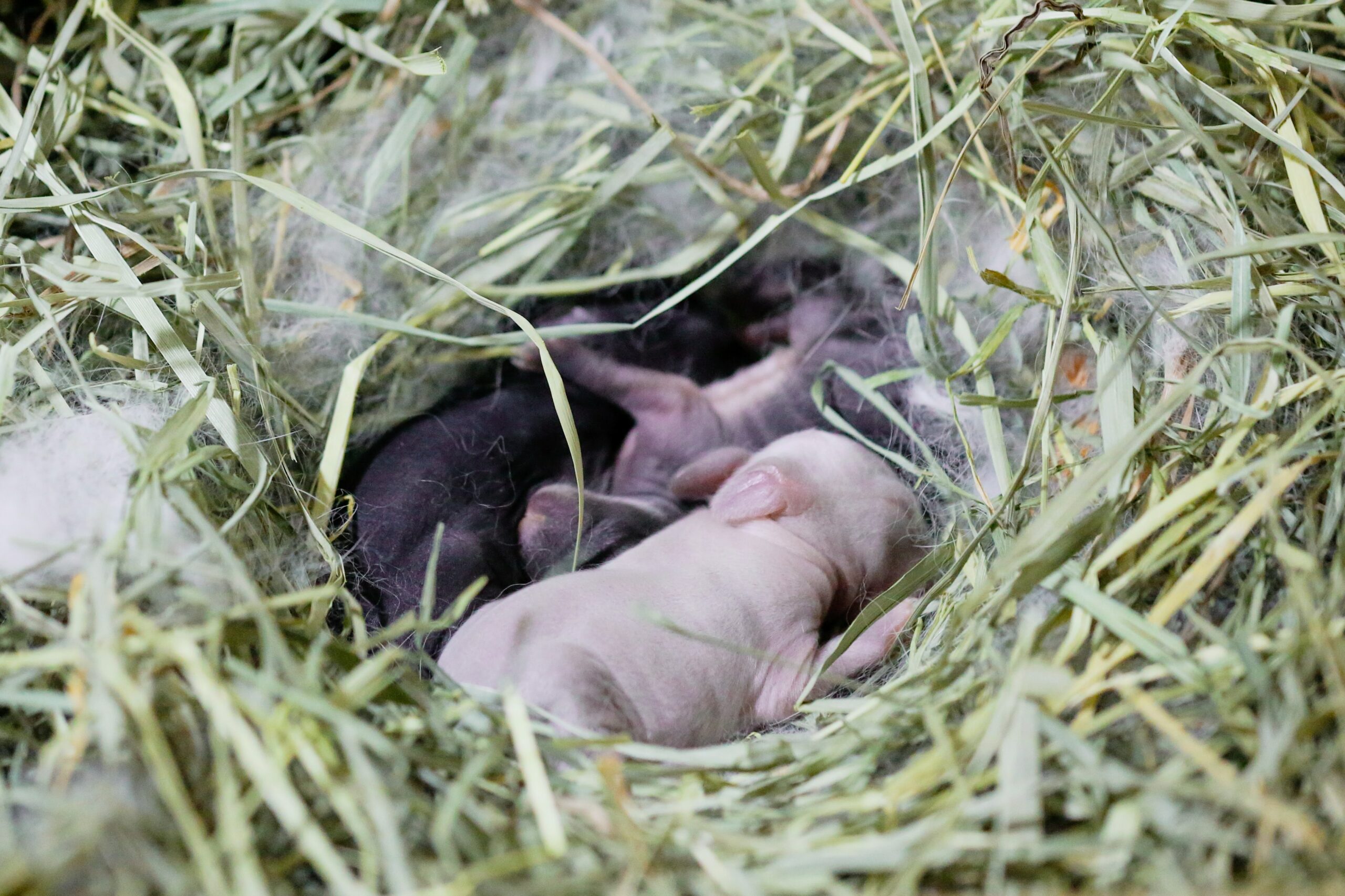
Luckily, the mother rabbit (or doe) doesn’t need any help giving birth to her kits. Usually, they tend to give birth during the night or very early in the morning.
So expect to wake up to the sound of mewling baby rabbits. Baby rabbits are born deaf, blind, and hairless, and may have a light, dark, or mottled color.
Take a few minutes to check that all of them are healthy. In larger litters, you may find some that have not survived birth. You will also find placenta and afterbirth in the nest, which you’ll have to remove.
There may also be some kits born outside of the nest that need heat, which you can provide by wrapping cloth around a hot water bottle with warm water and putting it beneath the bedding.
Make sure the mother rabbit has constant access to fresh food and water as well. Doing this helps avoid the risk of the mother rabbit turning to cannibalism and eating some of her kits. This also helps ensure she has enough milk for her litter.
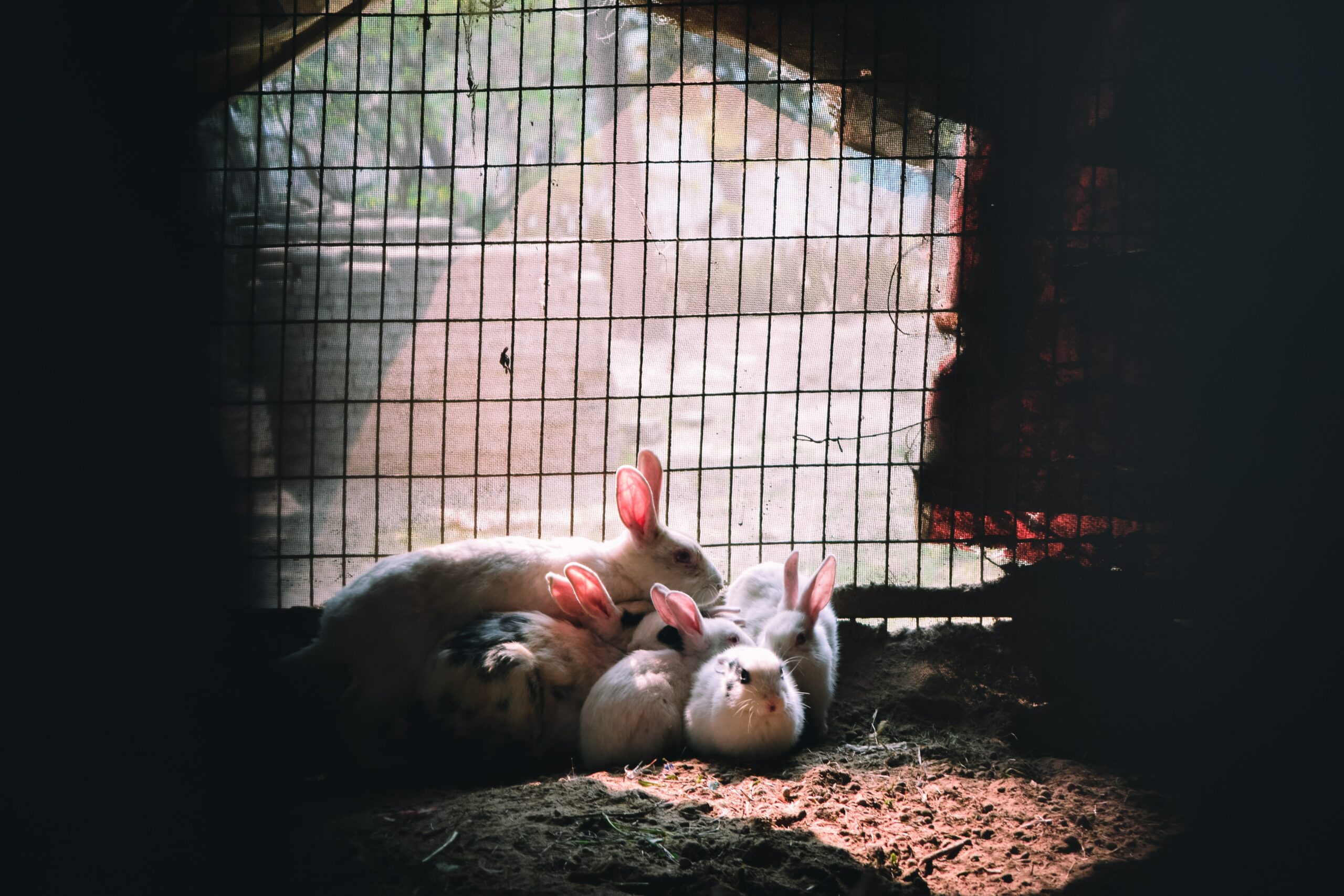
Hopefully, with enough food and water, your mother rabbit will be successful in nursing her litter. Mother rabbits only nurse their litter once or twice a day and for only a few minutes.
Luckily, there are signs you can look out for, which include:
- Babies with round and wrinkle-free stomachs
- Babies that are peaceful and calm
- Babies that are warm
If your mother rabbit isn’t tending to her litter, the kits are likely cold and mewling like a kitten. If this happens, call your vet immediately and seek professional help.
How to Take Care of a Newborn Rabbit
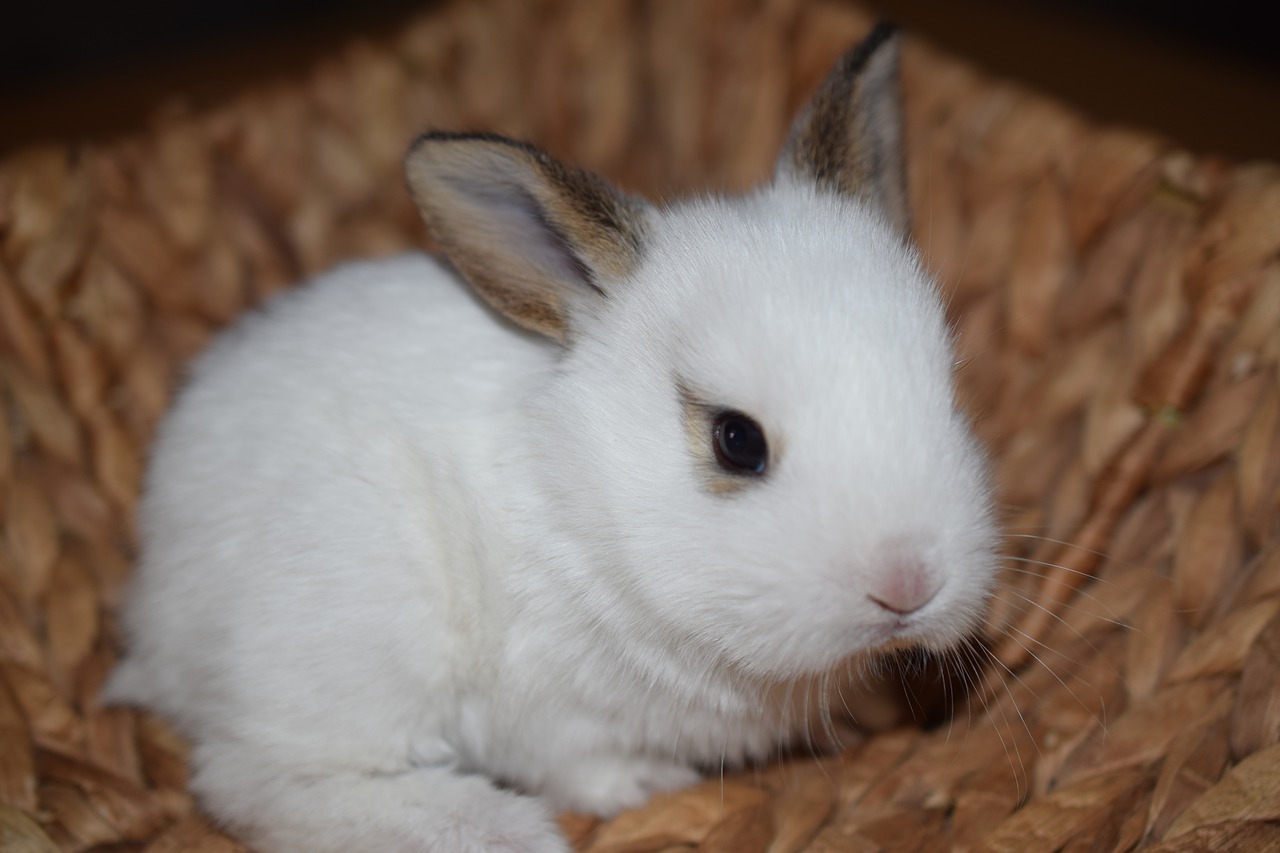
Your journey as a rabbit parent doesn’t end with the mother giving birth, as there are plenty of things you can do to support her litter’s growth.
First, keep their nest clean and hygienic. Newborn rabbits are fragile and vulnerable to disease, so keep their living spaces clean by:
- Removing soiling and droppings
- Replacing their bedding with new and fresh ones
- Wiping down the nest with dry tissues
Second, you should make sure that the nest is away from direct sunlight.
Make sure that there is no deep water dish near the babies, as they can drown. Ideally, it would be best to do this until they are strong enough to get out of the box on their own.
Preparing the Mother
If you started this journey with a pregnant rabbit, then you have the benefit of time. Rabbit pregnancies last around 32 days, so make sure your mother rabbit is healthy and well-fed.
You can also make her a nest box using cardboard and pesticide-free grass, straw, or hay. Design the box so that the mother can easily hop in and out, but the kits cannot. Keep the nest in a dark and calm place too.
Another thing you can do is to move the mother away from the father, but not too far away. Do this to prevent further pregnancy, as rabbits bond very closely.
Preparing for the Baby Bunny
To be honest, there is not much that you need to do to prepare for the coming bunnies. Perhaps the best you can do is build a nest for the bunny babies.
Pro Tip: Immediately after breeding, record the date and set your calendar for the nesting box in 28-29 days.
You can make one out of a shoebox, but it is likely that you want to give the rabbits the best start in their life. So, save yourself a lot of hassle (and boost their comfort), by opting to buy a proper nesting box. You can get one from nearly every reputable pet retailer, so they shouldn’t be too difficult to track down.
Next, you will want to put some cedar shavings into the box. You must make sure that these are rated for use with rabbits. You can’t just shave a cedar tree and get some shavings from that.
They will not have dried out properly, and this can be toxic to the bunny babies. You don’t need much in the way of cedar shavings in there. It should measure about a quarter of the way up to your hand, and maybe a little bit more if it is the winter.
The rest of the nest should be filled up with hay. You should make a small little hole at the top of the hay. This will provide the mother with a good starting point to burrow.
The nest should be placed in the hutch 5-10 days before the bunny babies are scheduled to be born. Make sure that you are swapping out the hay if the mother is eating it, but she probably shouldn’t.
Wait for the Birth of the Bunny Babies
Now, you need to do nothing but wait for the birth. The mother of the bunny babies has this, so you just need to check the box every so often to see if the bunny babies are there (they could be buried very deep)
Sadly, it is likely that you will have the unfortunate task of removing stillborn bunny babies from the nest. It is important that you do this as quickly as possible. If you o not, then it will make both the other bunnies and the mother very sick.
It is important that you leave any placenta in the nest. The mother will need this for nutrients.
What to Feed a Newborn Rabbit
If everything is well, then the mother rabbit should nurse her babies with milk. After about two weeks, you can start introducing high-quality pellets or alfalfa hay, although they will continue to nurse until they are eight weeks old.
Eventually, the bunnies will wean and move away from their mother’s milk. Remember to let this happen naturally, as the milk they get strengthens their immune system.
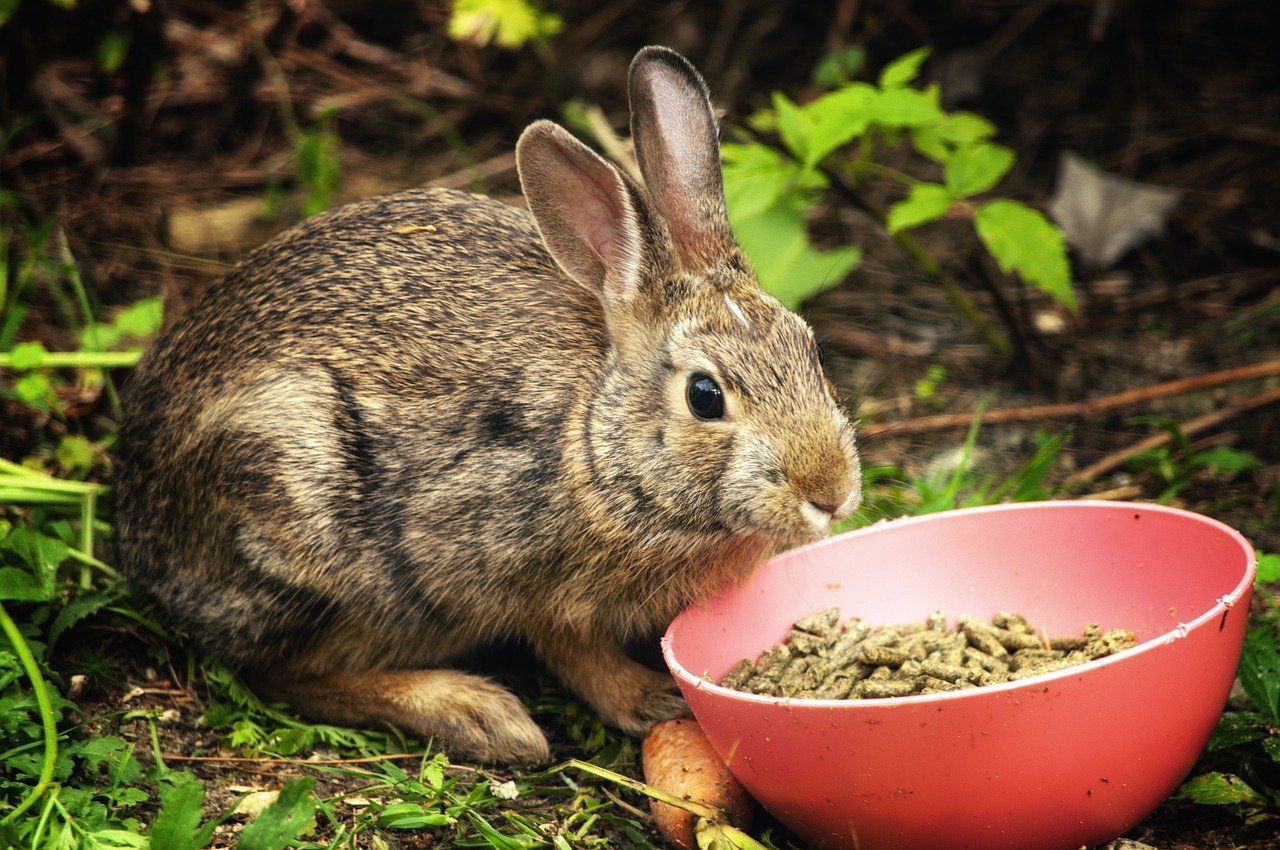
Once they switch to pellets, provide fresh ones and remove old ones in their nest. They may also start eating their mother’s cecotropes (soft fecal pellets), which help them develop a healthy gut. Do this for about two months until they are fully weaned.
From there, you can start slowly introducing greens and vegetables like kale, carrots, and lettuce. Do this slowly as their digestive systems need to adjust first.
While it is rare, there is a chance that you will need to feed the baby bunnies on your own. Thankfully, this should be pretty easy to do. While you can’t go to a pet store and get newborn bunny milk, you can get kitten milk.
Ask your pet store if you are unsure as to what you are looking for. This should be rich enough in nutrients for your baby bunnies. You can feed it to them using a bottle designed for kittens too.
Some people will also attempt to up the fat content of the milk. To do this, add a small amount of sugar-free whipping cream into the milk. This should give the baby bunnies enough fat to plump up their stomachs a little (this is a sign of a healthy baby bunny!)
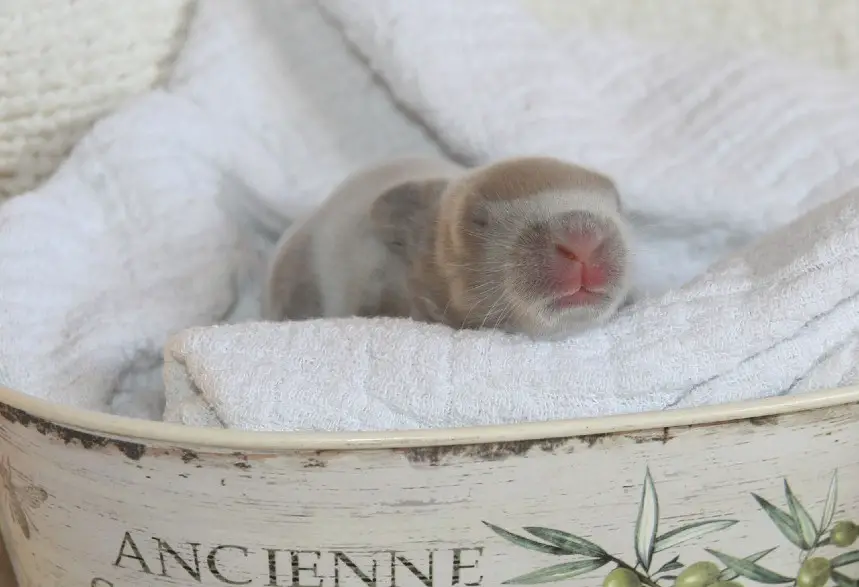
The baby bunnies won’t need much milk during the first few weeks of their life.
In the first 2 weeks, you probably won’t need to give them more than 5CC of milk per feeding (this is twice per day). Every couple of weeks, you can add 10CC to the milk. Of course, your rabbit will know when it is consuming enough.
It is important that you do not ‘force’ feed the rabbit. Let them take the milk on their own (they should be laying on their back)
Before you feed them, you should stimulate the genital area with a warmish cloth. This will allow them to pass a stool or urinate. It is important that you look at the consistency of this. You do not want the urine to be brown.
This would indicate serious dehydration. You can’t deal with this on your own. It is important that you take the baby bunny to a vet.
How to Hand Feed a Baby Bunny
There may be times when the mother rabbit isn’t tending to her babies. When this happens, you will need to hand feed the newborn rabbit manually.
To do this, you will need Kitten Milk Replacer (KMR) or goat milk, with one tablespoon of whipping cream (no sugar) for added calories. To feed them, use a sterile oral syringe or eyedropper, available at most pharmacies.
How much to feed them varies greatly on how big the kits are. As for how many times you need to feed your newborn baby rabbit, it should be twice a day.

Baby rabbits feed while lying on their backs, so you can loosely wrap them in a soft cloth and lay them in your arms or lap. Let the bunny suckle at its own pace and be gentle with the oral syringe to avoid suffocation.
After each feeding, gently stroke their genital area with a soft cloth or cotton ball and do this until they start producing stool and urine. Keep stroking until the bunny stops.
You will know that the kit is healthy if its stools are soft and in shades of green and yellow. If it’s brown and gritty, call the vet immediately as they are dehydrated.
How to Handle a Baby Rabbit
For the first eight weeks of their life, it’s a good idea to keep the touching minimum, or none at all.
Baby rabbits are very vulnerable to illness, so make sure you thoroughly wash your hands with soap and warm water to get rid of bacteria and pathogens.
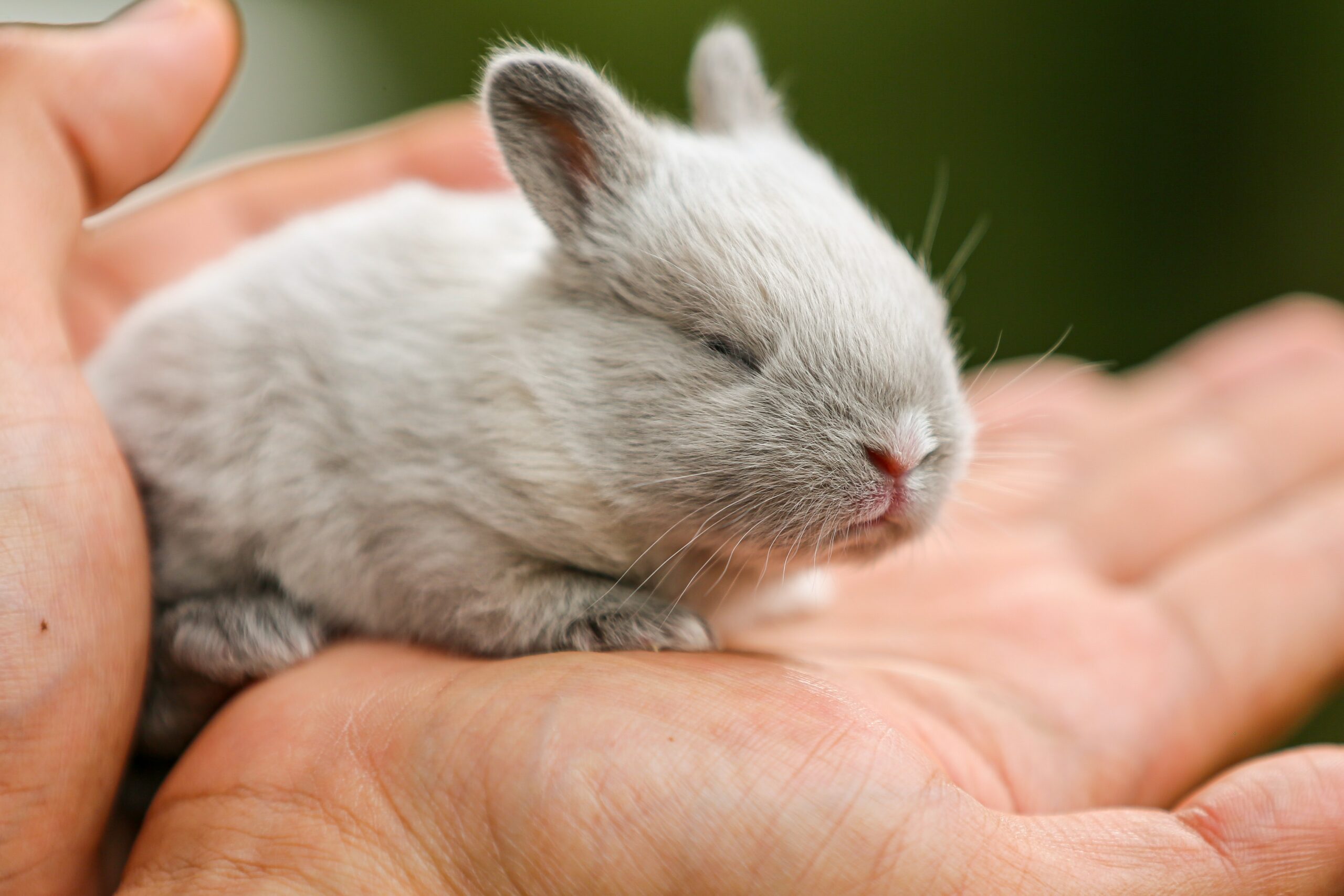
A common myth is that if you touch a baby rabbit, you will pass your scent, and the mother will reject it. This is not entirely true, especially for domesticated rabbits. Actually, it’s a good idea to handle the bunnies regularly after eight weeks, as they need to get used to human contact.
You can also let them explore protected spaces and ask your veterinarian about regular check-ups and vaccinations during this time.
Don’t be Afraid to Handle the Baby Bunnies
Right at the start, we want to tell you that you shouldn’t worry about handling the babies. Unlike other animals, rabbits tend not to care too much about whether a person has touched their babies.
They are still going to be caring for them in exactly the same way. It is unlikely that a rabbit will ever abandon its babies. The only time this happens is if the rabbit giving birth is still fairly young, or if it isn’t producing milk for whatever reason.
So, if you do find wild bunnies, it is vital that you check that they have been abandoned. It is really, really unlikely that they have been.
That being said, you probably wouldn’t want to handle them too much. You should only do it if absolutely vital. Some mothers have been known to eat their bunny babies if they think there are predators in the vicinity. It is unlikely if the mother knows who you are, but sometimes you do have to deal with that behavior.
You can read more in our article on how to handle a rabbit.
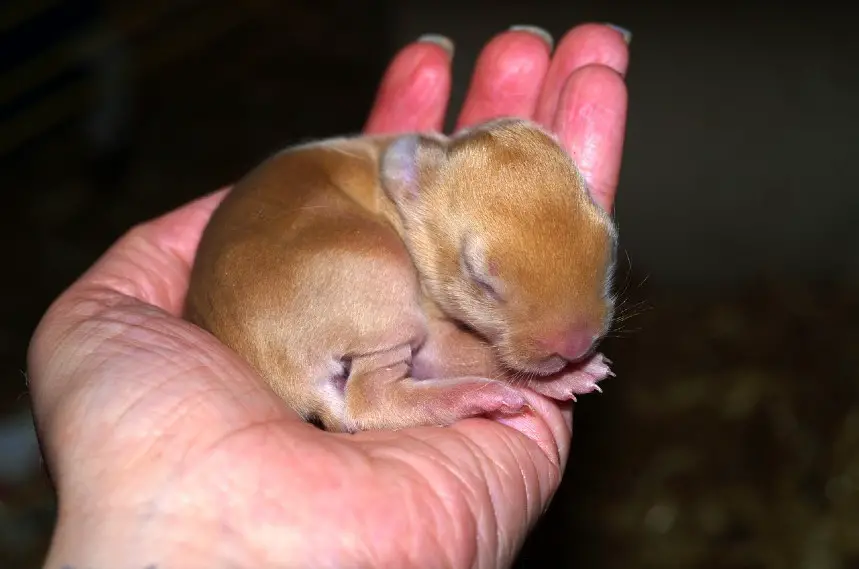
Remove the Male Rabbit From the Situation
It is generally quite fine to have a male rabbit in the hutch with the rabbits…that is assuming that you want more bunny babies (you probably don’t!).
The father won’t do anything to harm the bunny babies, although it will probably start to play with the males as they get a bit older. The reason why you want to have them removed from the hutch is that the female will be ready to be fertilized the second they have given birth.
Believe us when we say that the male rabbit is going to be more than happy to make that happen. You can’t let it happen. The bunny babies would barely have grown up before the new ones have popped out.
Frequency of Feeding the Baby Rabbits
Here, we are talking about the frequency that the mother will feed the newborn rabbit babies. At most, it will be once or twice per day. Because rabbits are prey animals, the mother will unlikely come anywhere close to the bunnies unless it is time to feed them.
The only time that you should be concerned about the mother and the baby bunny bond is if there seems to be no feeding whatsoever. This is when you may need to step in.
It is easy to tell if a baby bunny is not eating, or not processing its food well. Their stomachs will be very wrinkled. In colder weather, it won’t be a case of the rabbits getting enough food, it is more of a case that the bunnies are not warm enough.
The best way to remedy this is to fill up a hot water bottle with warm water. This can then be placed under the cedar shavings. This should provide enough warmth for the babies.
Baby Bunnies at the 6-8 Week Mark
At the 6-8 week mark, your baby bunnies will no longer be taking the milk. Instead, they should be handed specially-formulated pellets and some hay. You may need to show them where this is. Do not feed them any fruits or vegetables at this stage.
After this, the rabbits should start to be a little bit more self-sufficient. After a few months, you can start to feed them fruits and vegetables. Although, you may want to read some of the articles that we have put together on this website to get a rough idea for how much they should be eating.
Conclusion
So, there you have it. It isn’t too difficult to care for baby bunny. The mother will be doing most of it. The only thing you really need to do is help with the nest, and then check whether the bunny babies are getting the nutrients that they need.
From here on out, you can pat yourself on the back, as you have successfully raised baby rabbits!
Whether you plan to give them away or keep them, you have helped take care of these gentle animals, which is a big step forward in being a responsible pet owner and human being. Thumbs up!
